Ludovic Koehl
Proof of Swarm Based Ensemble Learning for Federated Learning Applications
Jan 02, 2023Abstract:Ensemble learning combines results from multiple machine learning models in order to provide a better and optimised predictive model with reduced bias, variance and improved predictions. However, in federated learning it is not feasible to apply centralised ensemble learning directly due to privacy concerns. Hence, a mechanism is required to combine results of local models to produce a global model. Most distributed consensus algorithms, such as Byzantine fault tolerance (BFT), do not normally perform well in such applications. This is because, in such methods predictions of some of the peers are disregarded, so a majority of peers can win without even considering other peers' decisions. Additionally, the confidence score of the result of each peer is not normally taken into account, although it is an important feature to consider for ensemble learning. Moreover, the problem of a tie event is often left un-addressed by methods such as BFT. To fill these research gaps, we propose PoSw (Proof of Swarm), a novel distributed consensus algorithm for ensemble learning in a federated setting, which was inspired by particle swarm based algorithms for solving optimisation problems. The proposed algorithm is theoretically proved to always converge in a relatively small number of steps and has mechanisms to resolve tie events while trying to achieve sub-optimum solutions. We experimentally validated the performance of the proposed algorithm using ECG classification as an example application in healthcare, showing that the ensemble learning model outperformed all local models and even the FL-based global model. To the best of our knowledge, the proposed algorithm is the first attempt to make consensus over the output results of distributed models trained using federated learning.
Detection of Poisoning Attacks with Anomaly Detection in Federated Learning for Healthcare Applications: A Machine Learning Approach
Jul 18, 2022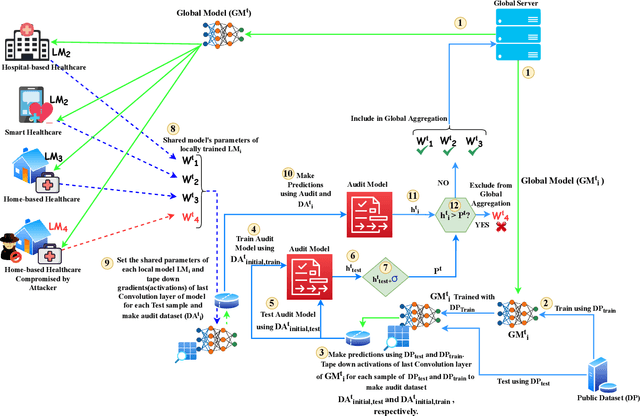


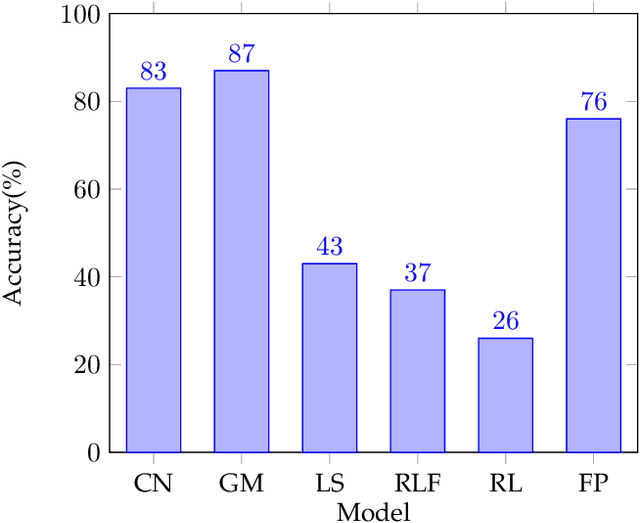
Abstract:The application of Federated Learning (FL) is steadily increasing, especially in privacy-aware applications, such as healthcare. However, its applications have been limited by security concerns due to various adversarial attacks, such as poisoning attacks (model and data poisoning). Such attacks attempt to poison the local models and data to manipulate the global models in order to obtain undue benefits and malicious use. Traditional methods of data auditing to mitigate poisoning attacks find their limited applications in FL because the edge devices never share their raw data directly due to privacy concerns, and are globally distributed with no insight into their training data. Thereafter, it is challenging to develop appropriate strategies to address such attacks and minimize their impact on the global model in federated learning. In order to address such challenges in FL, we proposed a novel framework to detect poisoning attacks using deep neural networks and support vector machines, in the form of anomaly without acquiring any direct access or information about the underlying training data of local edge devices. We illustrate and evaluate the proposed framework using different state of art poisoning attacks for two different healthcare applications: Electrocardiograph classification and human activity recognition. Our experimental analysis shows that the proposed method can efficiently detect poisoning attacks and can remove the identified poisoned updated from the global aggregation. Thereafter can increase the performance of the federated global.
Lightweight Transformer in Federated Setting for Human Activity Recognition
Oct 01, 2021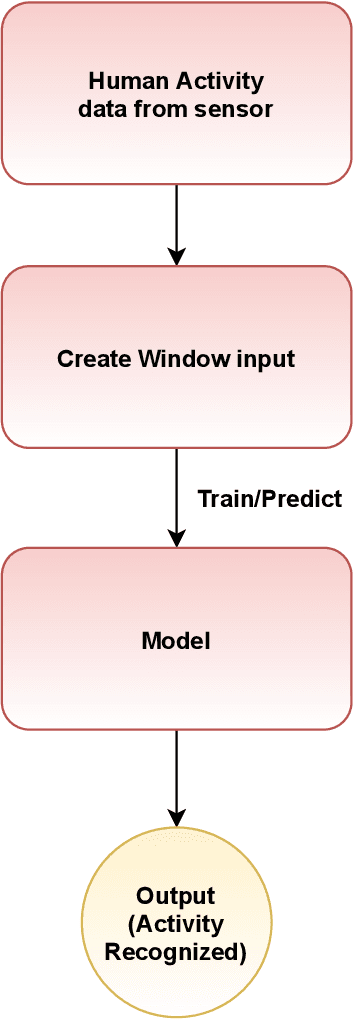
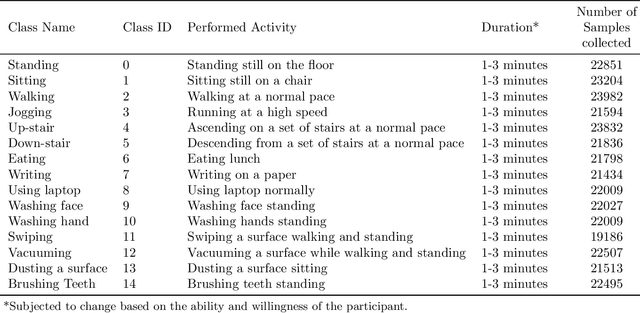
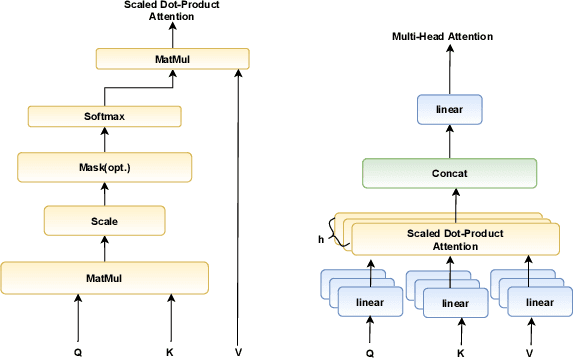
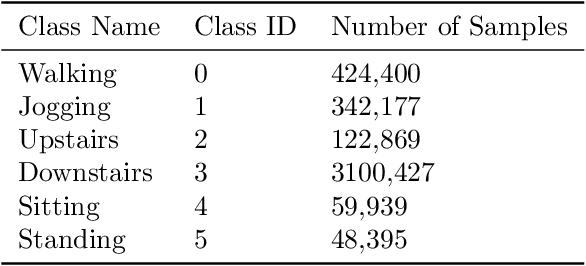
Abstract:Human Activity Recognition (HAR) has been a challenging problem yet it needs to be solved. It will mainly be used for eldercare and healthcare as an assistive technology when ensemble with other technologies like Internet of Things(IoT). HAR can be achieved with the help of sensors, smartphones or images. Deep neural network techniques like artificial neural networks, convolutional neural networks and recurrent neural networks have been used in HAR, both in centralized and federated setting. However, these techniques have certain limitations. RNNs have limitation of parallelization, CNNS have the limitation of sequence length and they are computationally expensive. In this paper, to address the state of art challenges, we present a inertial sensors-based novel one patch transformer which gives the best of both RNNs and CNNs for Human activity recognition. We also design a testbed to collect real-time human activity data. The data collected is further used to train and test the proposed transformer. With the help of experiments, we show that the proposed transformer outperforms the state of art CNN and RNN based classifiers, both in federated and centralized setting. Moreover, the proposed transformer is computationally inexpensive as it uses very few parameter compared to the existing state of art CNN and RNN based classifier. Thus its more suitable for federated learning as it provides less communication and computational cost.
Designing ECG Monitoring Healthcare System with Federated Transfer Learning and Explainable AI
May 26, 2021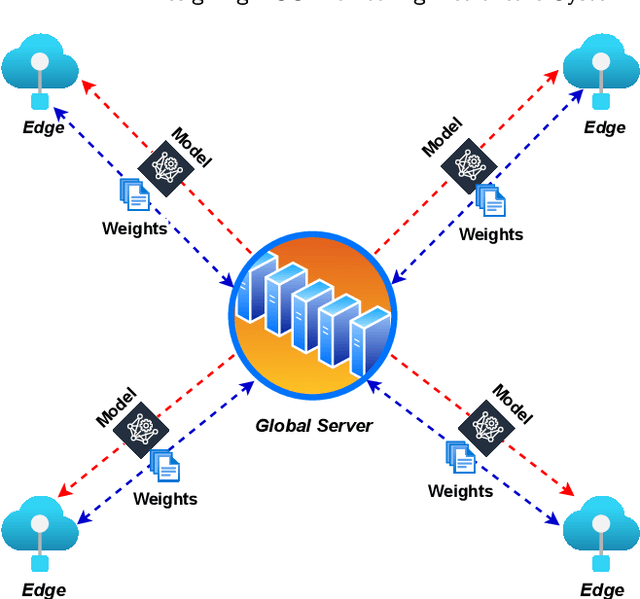
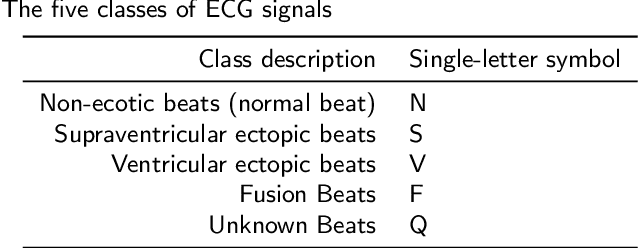
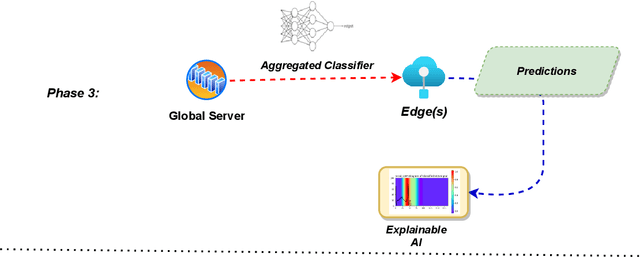

Abstract:Deep learning play a vital role in classifying different arrhythmias using the electrocardiography (ECG) data. Nevertheless, training deep learning models normally requires a large amount of data and it can lead to privacy concerns. Unfortunately, a large amount of healthcare data cannot be easily collected from a single silo. Additionally, deep learning models are like black-box, with no explainability of the predicted results, which is often required in clinical healthcare. This limits the application of deep learning in real-world health systems. In this paper, we design a new explainable artificial intelligence (XAI) based deep learning framework in a federated setting for ECG-based healthcare applications. The federated setting is used to solve issues such as data availability and privacy concerns. Furthermore, the proposed framework setting effectively classifies arrhythmia's using an autoencoder and a classifier, both based on a convolutional neural network (CNN). Additionally, we propose an XAI-based module on top of the proposed classifier to explain the classification results, which help clinical practitioners make quick and reliable decisions. The proposed framework was trained and tested using the MIT-BIH Arrhythmia database. The classifier achieved accuracy up to 94% and 98% for arrhythmia detection using noisy and clean data, respectively, with five-fold cross-validation.
 Add to Chrome
Add to Chrome Add to Firefox
Add to Firefox Add to Edge
Add to Edge